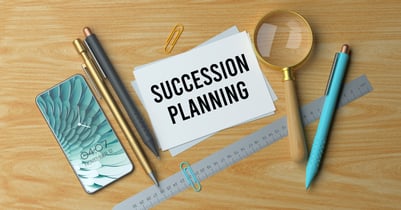How to successfully onboard remote hires
November 30, 2022
- Home
- Blog

One of the great challenges of an international organisation is keeping everyone on the same page. Different time zones, different countries, different labor law regulations. People already start their jobs in distinct way that varies from each other and have very keen differences.
In order to keep things cohesive, companies are going out of their way to create a good environment and work culture, and onboarding is a great tool to help start creating it while retaining your talents, fighting employee turnover and growing your organisation from there.
In this blog you’ll get to know more about the concept of onboarding, the steps for a good start in a company, the common mistakes and more.
What is Onboarding?
Onboarding is the whole admission process for new employees. In theory, it varies from organisation to organisation, but the idea is the same: welcome new people in the team in the best way possible, so they can hit the ground running.
The thought process behind a great onboarding program is getting the new remote hire all the information needed. The effective onboarding strategy is oriented so candidates can fully understand their new position and job requirements as well as feel integrated into the whole company.
The concept of onboarding contemplates all the steps the candidate goes through, from recruitment, welcoming, and training to employee engagement and building relationships with team members. It may last anywhere from a week to a whole year, but the most effective onboarding lasts for a few months at least. Ideally, at the end of the entire process, your new employees will feel more confident to do their jobs in the best way possible.
Five steps to ensuring a great onboarding experience

Step 1 - Start from recruitment
For most HR professionals, the recruitment part is essential to the success of onboarding. From the introductory meeting, the goal of this step is to leave the candidates with a clear sense of what the job role is, and what the company wants and clarify what the mission, values and culture of the organisation are.
The key here is transparency with the candidate during the whole onboarding period to make every possible prospective employee touchpoint clear, and with remote workers, that's even more important.
What to do in this step:
- Review job descriptions, websites and all other content for accuracy
- Give the candidates a small task in order to test them for skills
- Be transparent about organisation policies, especially about vacations, bonuses, holidays and more
Step 2 - Early Onboarding
With the offer in hand, it’s time to get back to the candidate. If the offer is accepted and signed, it’s time to officially start the onboarding process. The window between signing the offer and starting date is a crucial engagement opportunity. It’s a perfect time to share relevant role documentation and information while building up excitement for the first day. Itinerary, goals and assignments for the first week are also good tools to engage new hires in this phase.
What to do in this step:
- Last discussion about requirements, expectations and responsibilities of the role. All to prevent surprises down the road
- Reach out to the candidate for any last-minute questions or concerns
- Create a first-week itinerary
- Give credentials for all platforms, tools and hubs needed
- Ask for a fun picture with some trivia about the new hire to use as an ice breaker
- Ask for a meeting with team to get to know the new employees on a personal/casual level
Step 3 - Welcoming on day one
As we all know, first impressions are the most lasting. The first day of work, especially in the office, is very important to make the new hire feel comfortable, welcome and appreciated. That’s why creating a personalised experience is the way to go. And all of this works while onboarding remote workers too. Scheduling a team lunch, a welcome kit and special meetings are key in this part of the process.
What to do in this step:
- Provide a “welcome kit” with customized items such as mugs, cups, mouse pads and more
- Orchestrate a first meet with the team for “ice-breaker” and more casual questions
- Set up a lunch (virtual or in presence) for most casual interactions
- Supply the new hire with videos, presentations and other content about the company, its history and background
Step 4 - Onboarding on the first weeks
When a new person is hired, the “firsts” are really important. The first offer, first day, first meeting, first lunch, first week. With that in mind, the first weeks are also an important part in the Onboarding process, with the employee starting to make plans inside the company, envisioning future possibilities and getting excited for future roles. It’s a great time for thinking ahead while already foreseeing the journey within the organisation.
What to do in this step:
- Help the new employees get to know all the departments within the company and its members.
- Schedule meet and greets with some company leaders and top performers
- Establish a list of regular and daily tasks, as well as first year goals, and key performance indicators
- Send a hire announcement for the whole organisation, as a way to welcome the new hire as well as making it noticeable for everyone
Step 5 - Team Building and Employee Engagement
The last step of the Onboarding process is all about relations and connections. The goal here is to provide opportunities for networking and for the newly hired to build key relationships across the office. For remote hires, it’s important to lead the way and show the new employee who does what in which departments for them to understand the chart of the organisation better. Team building is a great way to engage and create connections while making people feel more and more comfortable in the organisation.
What to do in this step:
- Organise team-building events from time to time
- Offer recognition through work platforms. Can be monetized or not!
- Encourage team leaders to establish monthly or bi-weekly meetings not completely related to work
- Pair the new hire with an onboarding buddy
- Ask direct managers to create regular check-ins in the long term
- Send the newly hired a survey about the onboarding to get some feedback
Looking to retain top talent? A great onboarding is the way to go!
Retaining talents is one of the biggest challenges companies face nowadays. With a whole lot of organisations looking for top talents, the way to retain and attract them is by offering not only the best salaries and benefits package but also the best work-life balance and structure.
A perfect way to engage and do that is through onboarding, especially for remote positions. Creating a team calendar, scheduling meetings and video conferences, asking for feedback, and facilitating two-way communication are all great ways to build a good work environment that people feel comfortable in.

Remote Hires: How to fit them into the onboarding strategy
Working remotely has become increasingly popular since the coronavirus pandemic hit. According to data projections from the Ladders, in 2023, 25% of jobs in North America will be completely remote.
Ensuring the employee onboarding process is suitable for the workplace where they're working from now on will be important as more and more employees demand flexible work arrangements.
With all that in mind, companies must adapt to better onboard remote hires. Remember that they are part of the organisation just as office workers. They need the right equipment, tools and training. They need to be taught about the policies and rules of the company just as well as any other worker.
Another thing that should be highlighted is the fact that, for the full-remote employees, your company will always be a digital workplace and, because of that, your content online must be impeccable, with easy access to loads of information about the organisation they’re a part of.
Common mistakes with newly remote hires: What to avoid
Mistake 1 - Not following up on their first day
Don’t immediately disappear after closing up on a job offer. Especially for remote jobs, it’s important to keep in touch with the candidate and check in every week prior to the start date. Make sure that they have all the onboarding materials and the ways to contact the company if needed. Everything to make the newly hired comfortable and confident to hit the ground running.
Mistake 2 - Information overload with lack of clarity of information
There’s a lot of information to be passed on to the new employee. But it is crucial not to overwhelm the candidate. The result can be atrocious, with the person lost or feeling like they don’t belong. An induction plan to ease them into the new role is a great way to mitigate this.
Mistake 3 - Not making it personal
It’s all about the people. Remember what it feels to be new: anxiety, insecurity and doubt are common at the beginning of a major change in your life. That being said, people want to feel wanted, like one of the team and not just another line in a spreadsheet. Try your best to personalise the experience for each candidate: create a welcome kit, make video calls, regular one-on-one meetings. This is going to make a difference in how they perceive the entire process.
Mistake 4 - Assuming they already know the company
No matter what company the new hire is onboarding for, they won’t start knowing everything. Never assume that people know your organisation’s history, background, metrics, policies and rules. Put your best effort into explaining and clarifying all the information and feel free to use all content formats you can think of.
Mistake 5 - Halting training before the time is right
After the induction period has ended, don't forget to continue supporting your new hire by providing opportunities for continued education and training. Make sure that there are always new ways for them to learn and experience more of the company.

Great onboarding examples
Amongst great multinational companies, there are a few standout examples of good onboarding examples that really thrive on inducting new employees and making their new hires feel at ease from the start.
One of the greatest and most digital companies in the world, Google has an open dialogue policy on the onboarding strategy. They are all about two-way communications, with the new employee being set up with a peer buddy to help them settle up and a series of onboarding check-ins for the first six months. The whole idea behind all that is to facilitate the life of the new hire and make them feel that once they are a part of the team, they are going to be listened to and their opinion is valid.
Microsoft
Microsoft has the “onboarding buddy program” going on another level. They provide new hires with a buddy or mentor from the very beginning of the onboarding. It’s all about relationship-building from the first weeks. The point is that people with good workplace relationships and connections get more valuable advice and have more chances be successful employees. Because of the company culture, people feel like helping each other and “happy to extend a helping hand” is a true motto inside the organisation, even for remote teams.

Get the best assistance for remote hires with Airswift's Global HR consulting services
If you need assistance on how to successfully onboard remote hires, Airswift can help!
With our Global HR Consulting, we cover all aspects of HR management, including remote onboarding processes. Incorporating Human Resources Implementation Systems (HRIS) can rapidly impact business playing a crucial role in automating manual processes and elevating the efficiency of workforce management. For that, our global employment and mobility (GEM) solutions can be of tremendous help
We have successfully assisted many of our clients in onboarding thousands of new employees. Our new hire academies provide seamless onboarding processes so that businesses can save on time and resources - even when your new employees are completely remote.
Get in touch with us today to learn more about how we can assist on onboarding and other HR related services.

This post was written by: Tomás Battaglia, Content Marketing Coordinator
You may also be interested in…
-
What is a PEO and when should you use one?
-
Your 10 step guide to onboarding a remote worker
-
What happens to employees during a merger? Avoiding M&A employment issues
-
How to create a LinkedIn profile for job search
-
How to overcome global payment processing challenges
-
Solving the oil and gas skills gap amidst the great crew change
-
How to choose the best employment agency for your next role
-
How to explain a career break in your cover letter
-
The importance of shadow payroll for global businesses
-
How to conduct an effective job search



